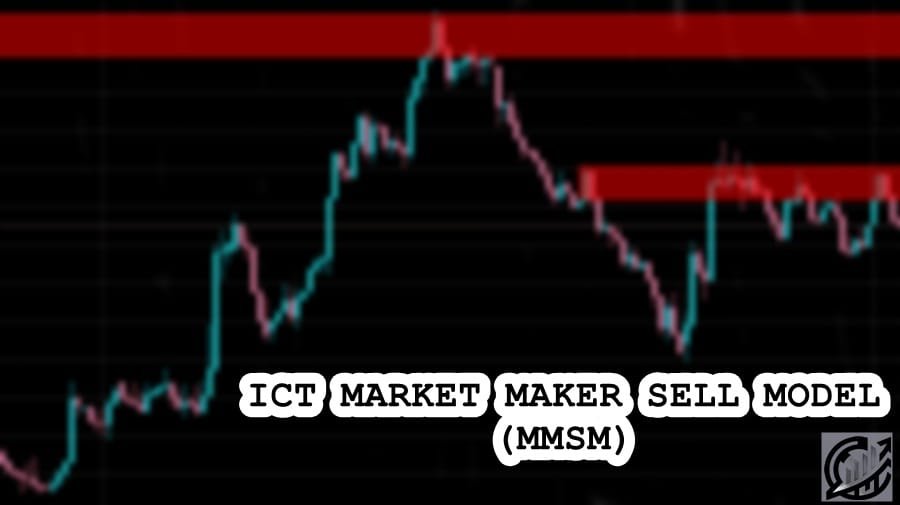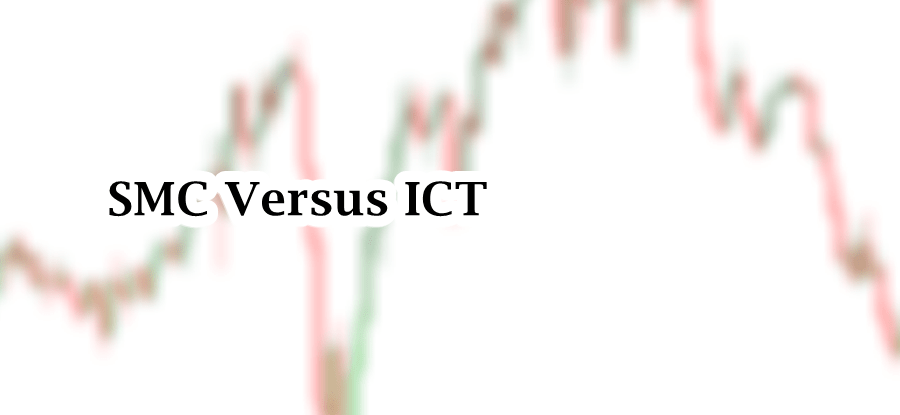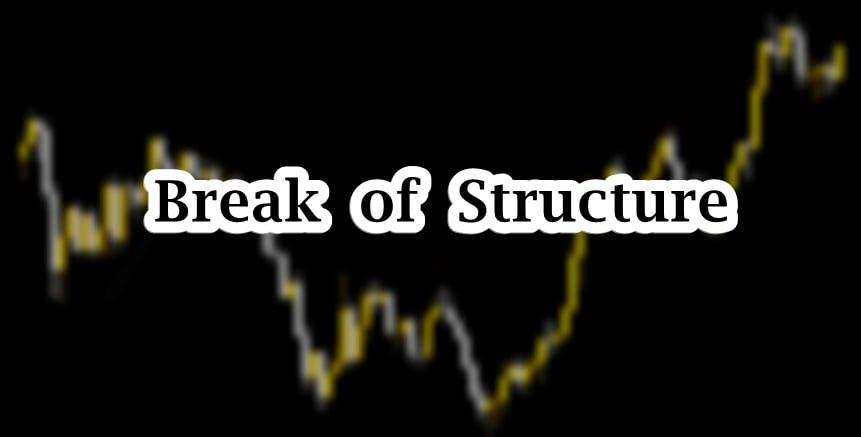
Table of Contents
ICT presents two types of trading Models: ICT Market Maker Buy Model (MMSM) and ICT Market Maker Sell Model (MMSM). ICT Market Maker Sell Model is particularly used in Forex and other financial market. It is based on institutional Order Flow. It aims to anticipate price movement by analyzing liquidity and institutional movements.
This article explores core concept of ICT Market Maker Sell Model, its components and trading with MMSM.
Understanding ICT Market Maker Sell Model (MMSM)
ICT MMSM is a trading model presented by Michael Huddleston that illustrates the transition of price from bullish to bearish. It provides structured approach to anticipate market movement. ICT MMSM contain several critical factors that must be aligned before implementing the model. This ensures the validity of the model. These factors include higher timeframe market structure, daily bias and draw on liquidity, and the presence of buy program on lower timeframes prior to the higher timeframe PD Array.
In Market Maker Sell Model (MMSM), higher timeframe market structure should be bearish. It is the foundational requirement of this model. This means that on higher timeframe market must demonstrate consistent lower lows and lower highs. This is an indication of downward momentum. The structure reflects prevailing dominance of sellers and sets the stage for bearish price delivery. This gives the confidence to rely on institutional order flow. This alignment provides macro perspective of market analysis.
The next important thing is that our directional intent should be accurate. It can be acquired through Daily Bias or Draw on Liquidity. Daily bias represents the market’s likely direction for the next day. Draw on Liquidity must align with a bearish narrative. This means that the market is targeting sell-side liquidity. It can be swing lows, equal lows or imbalances zones below the current price. This alignment increases the likelihood that institutional players will take the prices lower.
Market must be bullish on lower timeframes. There should be evidence of a buy program on lower timeframes. This involves a deliberate upward movement aimed at clearing out liquidity above the significant highs, enticing retail traders to long the market. This engineered liquidity grab allows institutions to accumulate short positions at premium prices, positioning themselves for the impending bearish expansion.

These are the few prerequisites of ICT Market Maker Sell Model. All of the factors must be combined for successful trading. Traders can better anticipate and execute trades aligned with institutional order flow.
Major Components of ICT MMSM
ICT concepts are relative in nature. These concepts can be combined in order get the confidence required for trade execution. There are four interconnected components that are the foundation concepts used for trade execution in alignment with institutional price movement.
First among them is the ranging market scenario. It is considered as an important phase of Market Maker Sell Model. This is also known as lateralization period where market moves within a confined range. In this phase, market moves between two limits. It is a state of temporary equilibrium between buyer and sellers.
Second thing is engineering liquidity. In this phase of the market movement, price forms higher lows. This encourages retail traders to buy and, at the same time, accumulating order above the swing highs. These moves are designed by institutions to set up a liquidity trap. This creates illusion of bullishness in the market. The generated liquidity during this phase becomes fuel for the next phase of the model. Smart money uses these orders to facilitate large sell-side positions.
Third is the Smart Money Reversal. It is the transition of market from bullish to bearish. Here, market aligns with higher timeframe market structure. This occurs when market reaches HTF PD Array. This can be an Order Block, or a Fair Value Gap. At this point, institutions reverse the trend and continue its new market direction. This phase confirms the market’s intent to shift lower and forms the foundation for the final component.
Fourth and the final is the Liquidity Hunt where price target key levels of sell-side liquidity. These are the old lows during the engineering liquidity phase. The low of the major consolidation also serves as the liquidity area. This downward movement not only sweeps these liquidity levels but also completes the cycle of price delivery.
These are the are the most important components that must be combined for better entries and exits. However, additional confluences can be made in order to get better result. Remember, it would be better if your trading strategy is simple and clean containing the logic and psychology necessary for your confidence.
Trading with ICT MMSM
In order to follow the structured approach of Market Maker Sell Model, we have to follow the following steps:
- Confirm that higher timeframe structure should be bearish. Series of lower lows and lower highs signifies strong downtrend. Additionally, determine your next Draw on Liquidity near the swing lows, equal lows or imbalances zones below the current price.
- After identification of institutional Order Flow, shift to a lower timeframe and identify a bullish trend. This bullish trend is nothing but a retracement for higher timeframe. Typically, this bullish trend on smaller timeframe ends near HTF PD Array.
- When price reacts to higher timeframe PD Array, wait for bearish confirmations. These confirmations come in various ways. It can be identified through Market Structure Shift (MSS) or Change of Character (CHOCH). This signifies a transition to a bearish order flow.
- After confirmation, execute a sell trade when price retraces into a Fair value Gap above the MSS level. This is just the one case of executing sell entries. It is also possible that market continue its new direction from Breaker Block or market forms Unicorn Model there.
- Place your stoploss 10-20 pips above the last swing high, the high formed before the MSS. Your take profit is the near draw on liquidity which are the old lows or imbalances.
This approach ensures alignment with institutional order flow and maximizes the probability of capturing significant price movement. By adhering to the steps outlined, trader can catch and capitalize on the ICT Market Maker Buy Model with confidence.
Final Note
The ICT Market Maker Sell Model is a powerful framework for trading in alignment with institutional order flow. This requires practice, patience, consistency, and a solid understanding of market dynamics. As a trader, back test the strategy and refined your trading approach before applying in the market.
Trading carries significant financial risk and may not be suitable for all investors. We often rely on past price action and behavior but it does not guarantee future result. Work on your emotions and psychology, and never trade with the money you cannot afford to lose. Use proper risk management, and seek professional advice if needed. You are solely responsible for any trading decisions you make.
Frequently Asked Questions (FAQs)
What is the ICT Market Maker Sell Model (MMSM)?
The ICT MMSM is a trading model that explains how institutional players manipulate price to create liquidity, accumulate positions, and drive toward key targets. It transitions from buy-side liquidity grab to a sell-side expansion.
What are the key components of the ICT MMSM?
The ICT trading model comprises four major components:
Original consolidation
Institutions engineer liquidity for buy-side expansion.
A shift from bullish to bearish order flow near Higher timeframe PD Arrays.
Last one is the Liquidity Hunt. Institutions target sell-side liquidity. This includes break of old lows and consolidation zones.
What are the key confirmations for a sell trade in MMSM?
In order to execute trade based on this model, mostly two confirmations are taken into consideration. First one is the Market Structure Shift. This breaks bullish market structure to establish bearish market movement.
I’m Abdullah Shah, a content writer with three years of experience in crafting engaging and informative content. My background in market analysis complements my work, allowing me to create content that resonates with audiences. I’m also a seasoned practitioner in the forex and crypto markets, with a strong foundation and deep interest in finance. My passion for the financial world drives me to produce content that is both insightful and valuable for those interested in understanding market trends and financial strategies.





